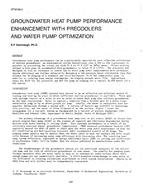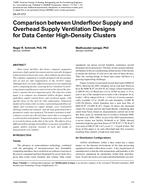Several questions have been raised lately within the building industry about the selection and use of weather resistive barriers behind cedar siding and shingles. This paper describes how the weather resistive barrier functions in conjunction with cedar siding. In particular, experimental results on system water intrusion management (wetting and drying) are discussed. Environmental chamber testing of mock-up walls were used to understand moisture transport within the system, to compare housewrap and building felt performance, and to determine the value of incorporating an air space behind the siding. The study was limited to one set of laboratory-simulated weather conditions and shows only the relative behavior of the wall systems tested. Observations confirmed that capillary action, at the siding overlap, is a significant source of bulk water entry into the wall structure when the siding is not back-primed. Water that entered the wall at the siding overlap can move inward by vapor diffusion. Although this inward vapor diffusion was measurable, it did not appear to be large enough to cause wall damage under the conditions tested. With regard to inward vapor drive, the wall performance was not greatly affected by the type of weather barrier, but walls using a housewrap as a weather resistive barrier were observed to dry slightly faster than those using felt. Incorporating an airspace between the siding and the weather resistive barrier reduced the overall moisture level of the wall. Durability considerations in the selection of weather resistive barriers–specifically, potential for mold growth, and the effects of chemicals that may leach out of cedar–are also discussed. Based on the experimental results and analysis, the desired attributes for weather barriers in these systems and installation practices for them are proposed.
Authors: Theresa A. Weston, Ph.D.; Tony D. Zatkulak; Jim Waggoner; Nimrit Kang
Citation: Thermal Performance of the Exterior Envelopes of Buildings VIII
Keywords: December, Florida, 2001
Citation: Thermal Performance of the Exterior Envelopes of Whole Buildings VIII
Product Details
- Published:
- 2001
- File Size:
- 1 file , 11 MB
- Product Code(s):
- D-7969


